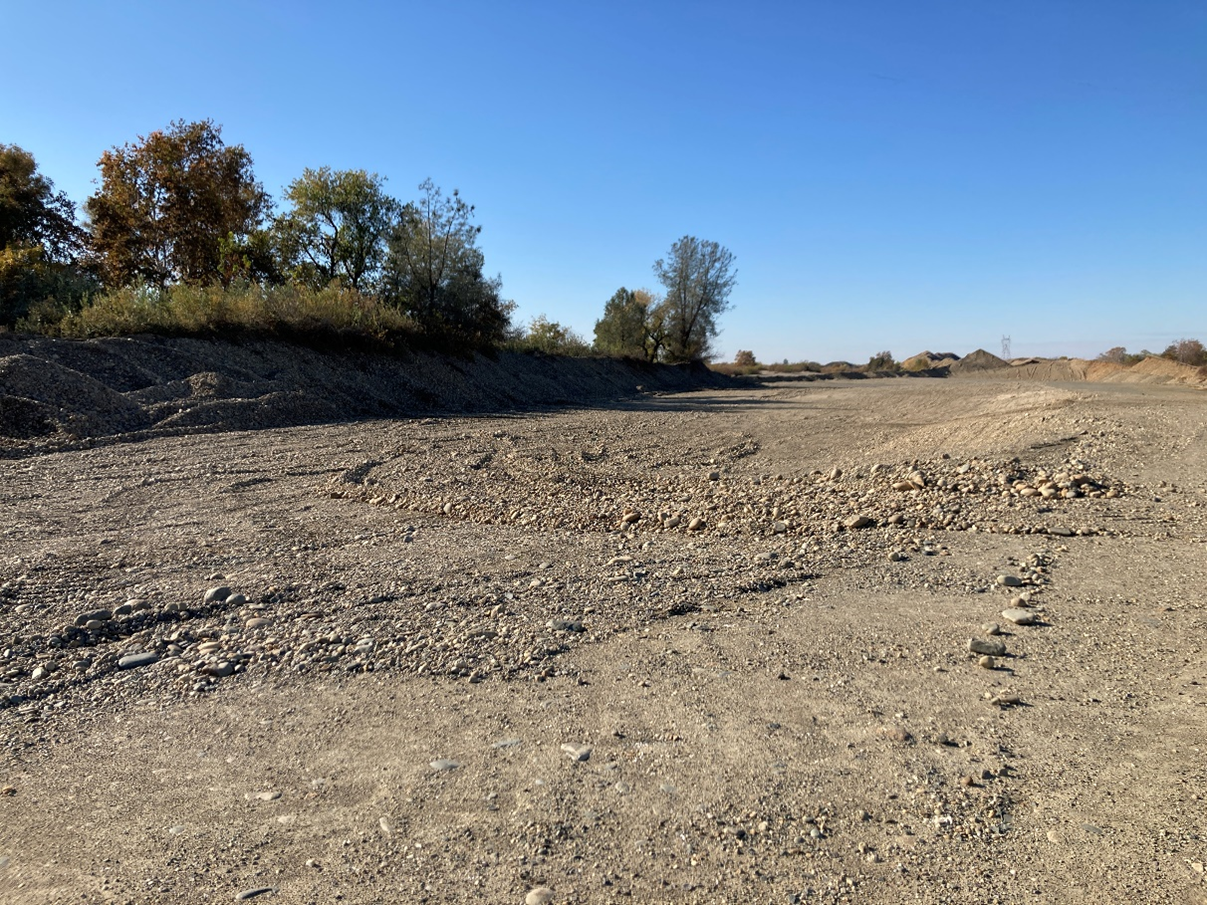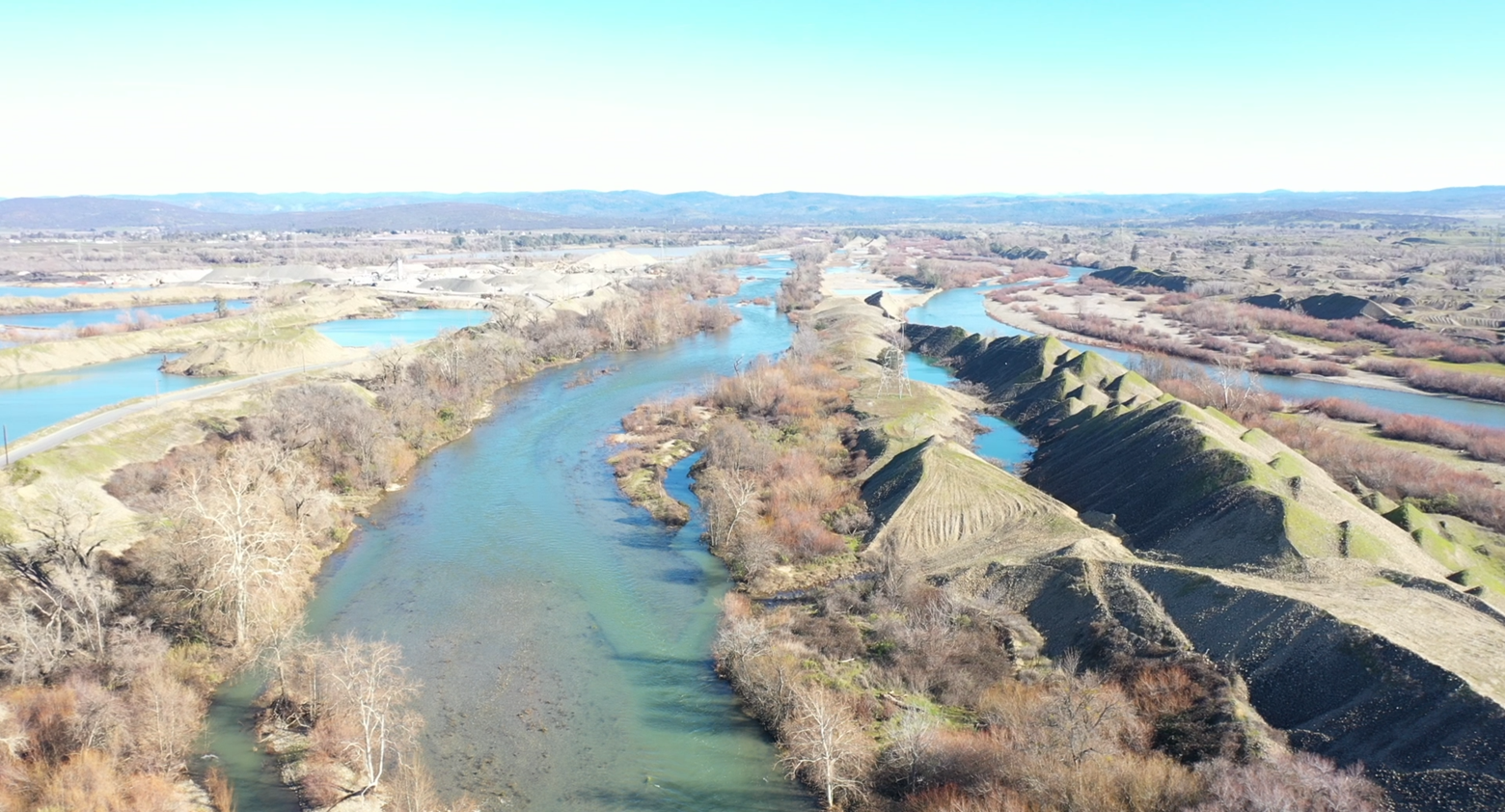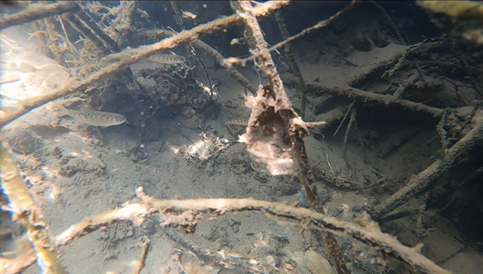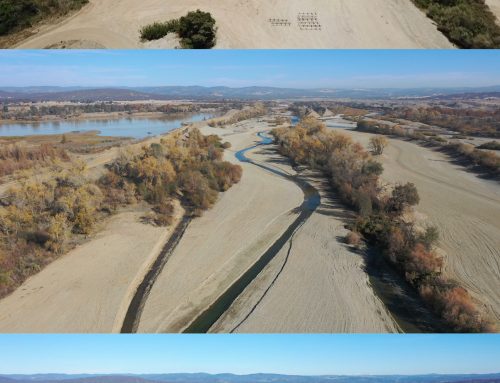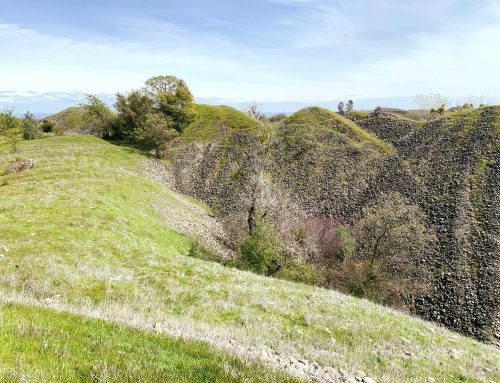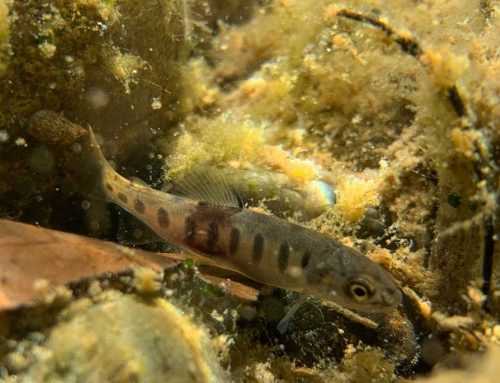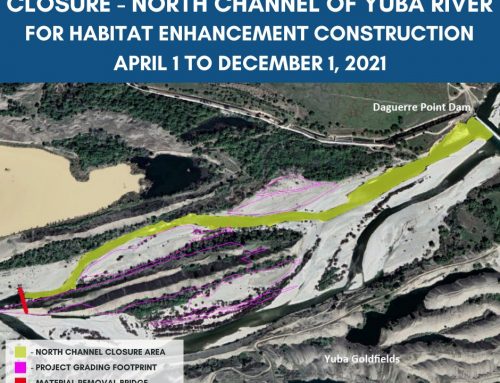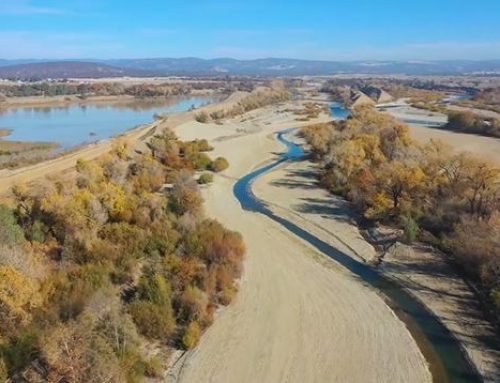We are beginning Phase 4 construction in June 2023, the last phase of construction on the Hallwood Side Channel and Floodplain Restoration Project. During this phase, we will remove the final portion of the middle training wall, complete final grading of Phase 3 and 4 floodplains and tertiary channels, plant additional trees, and place large woody material to increase juvenile salmon habitat complexity. Construction is expected to be completed by late November 2023.
A temporary bridge has been installed across the north channel of the Yuba River at the Teichert-Hallwood plant for access to the work area. Any watercraft should reduce speed when traveling through the north channel and flows can change without warning. This will be in place from June 30 – November 30, 2023. For more information call Yuba Water Agency (530) 741-5000 or Yuba County Sheriff Marine Patrol (530) 749-7777.
In 2022, approximately 760,000 cubic yards of material was removed from the middle training wall in the Phase 3 footprint to achieve an interim grade which will be finished in 2023. A total of 32 large woody material structures were also installed within the Phase 1 footprint (middle training wall, point bar, and the upper end of the perennial channel).
Juvenile Chinook salmon and O. mykiss were documented rearing in the perennial side channel and alcoves during spring 2021 and 2022 (low flow drought years) and in inundated floodplains and alcoves in 2023 (a high flow wet year) during snorkel and seining surveys. During 2023, extended salmonid rearing was documented into at least mid-June in the Hallwood site, whereas juvenile salmonids were absent by mid-May at an unrestored control site. A juvenile Chinook salmon PIT tag mark-recapture study documented habitat use and growth of individual fish in the Hallwood floodplain and alcoves.
Preliminary data from 2021 suggest that drift invertebrate prey densities increased in the Hallwood side channel after restoration, and juvenile salmonid stomach fullness increased and percentage of empty stomachs decreased following restoration. Non-native fish communities that prey upon and compete with juvenile salmonids were almost completely eliminated following restoration. Natural riparian tree recruitment was documented across all habitat types (floodplain, side channel margins, alcove), including cottonwood, several willow species, alder, Oregon ash, sycamore, button willow, and coyote bush.
Photos taken by cbec eco engineering. GoPro video taken by Cramer Fish Sciences.

